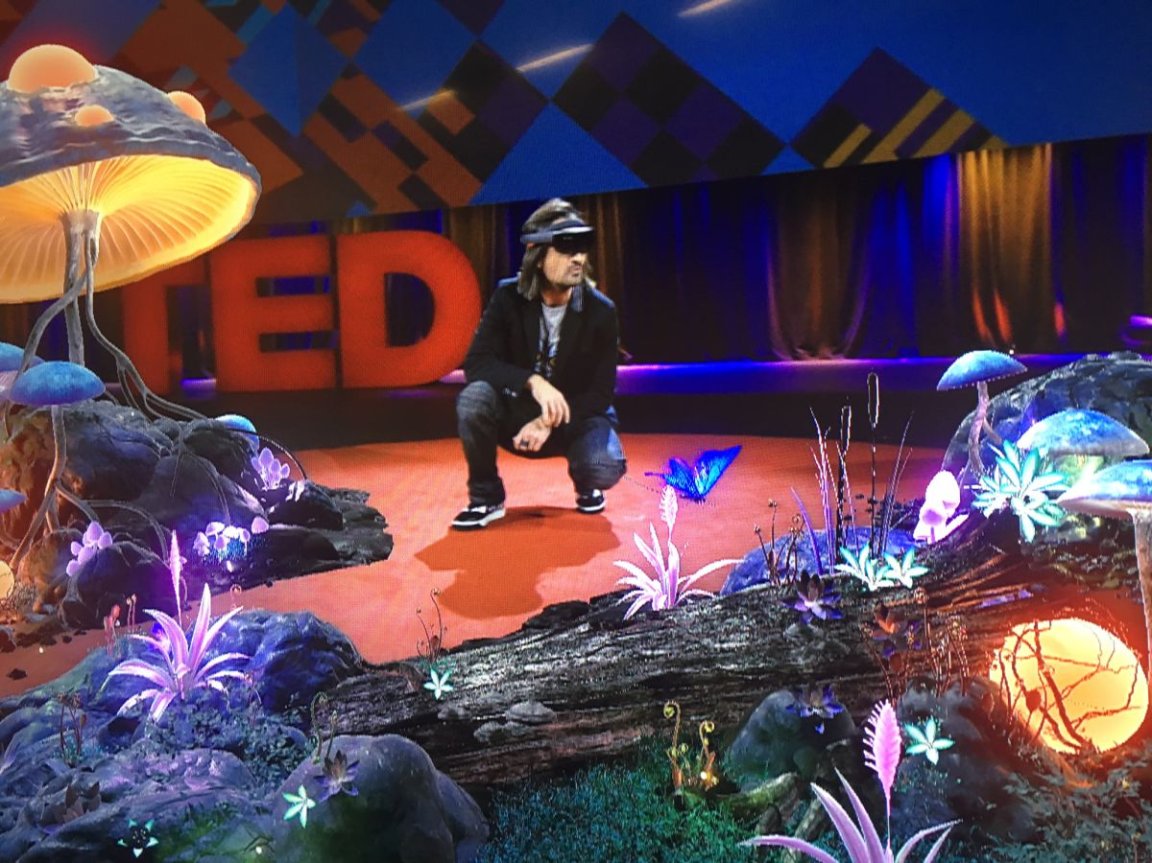
With Microsoft HoloLens creator Alex Kipman’s recent TED talk in Vancouver, Coachella’s famous Tupac hologram now has some serious competition.
By using the headset’s spatial mapping technology, Kipman showed the HoloLens’ “mixed reality” capabilities in real-time. In his demo, he was able to interact with and modify the holograms overlaid on the TED stage, including a trip to the Moon, a magical virtual forest (complete with fairies and elves), and a quick jaunt to Mars (based on actual Curiosity rover data).
The highlight of Kipman’s presentation was when he made NASA’s Jeff Norris “teleport”onto the TED stage, calling it the first real-life holographic teleportation. “I’m actually in three places. I’m standing in a room across the street while I’m standing on the stage with your while I’m standing on mars a hundred million miles away,” says Norris.

HoloLens in Space
This is not the HoloLens’ first foray into space, as it’s also working with NASA in its Sidekick Project.
This #saturdaymorning checked out the @Microsoft #HoloLens aboard @Space_Station ! Wow! #YearInSpace pic.twitter.com/OZlWmzWjsY
— Scott Kelly (@StationCDRKelly) February 20, 2016
The project currently has two modes, Remote Expert Mode and Procedure Mode. The first allows a ground operator to see what a crew member sees and draw annotations in the environment to coach them through a task, while the latter augments standalone procedures with animated holographic illustrations.
HoloLens’ technology has the potential to be an invaluable and necessary resource for space organizations, especially for deep space missions where communication delays complicate difficult operations.

“HoloLens and other virtual and mixed reality devices are cutting edge technologies that could help drive future exploration and provide new capabilities to the men and women conducting critical science on the International Space Station,” said Sam Scimemi, director of the ISS program at NASA Headquarters in Washington. “This new technology could also empower future explorers requiring greater autonomy on the journey to Mars.”
Although developer kits are now available at $3,000 a pop, it looks like it would still take a while before the HoloLens is made available to consumers. As Kipman says in an interview with Re/Code, “If a consumer bought it today, they would have 12 things to do with it,” Kipman said. “And they would say ‘Cool, I bought a $3,000 product that I can do 12 things with and now it is collecting dust.’”
